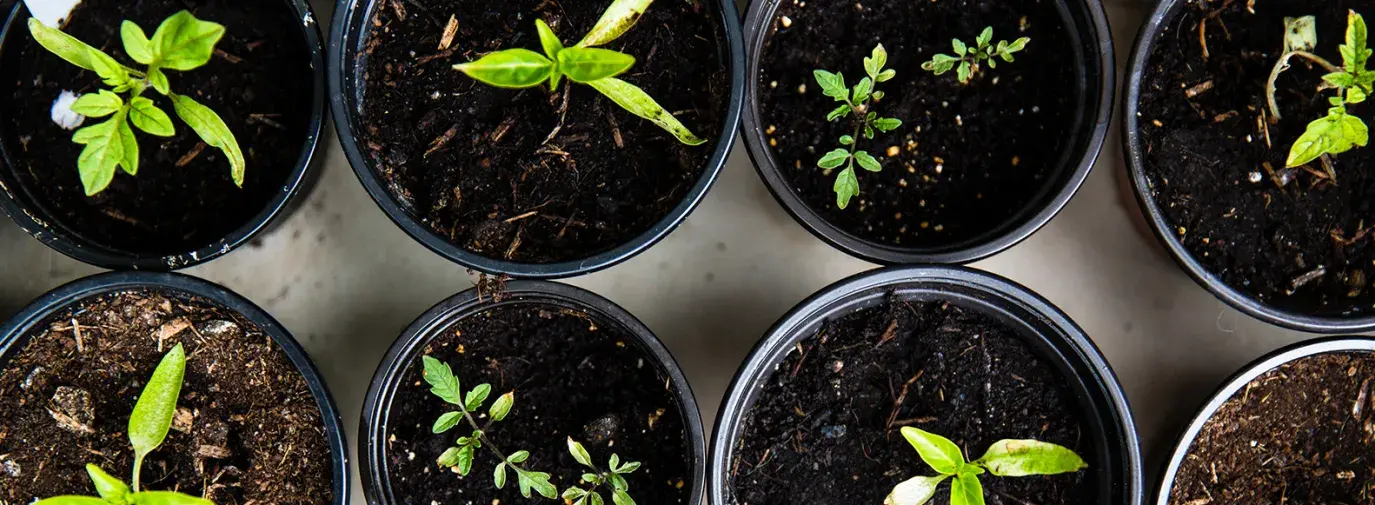
Are dirt and soil the same thing? NO! This blog explores some major differences and highlights why understanding soil is so important to discussions around regenerative agriculture, carbon sequestration, and climate change.
Soil. You might have noticed this word coming up more and more around here at Green America, especially in our new Re(Store) It! campaign. We’re excited to be talking about building healthy soils to reverse climate change and improve farmlands in this campaign. But, as we do more research and talk more about soil, we’ve come to realize that this important resource is often misunderstood and oversimplified. Isn’t it just stuff that holds plants in the ground? Soil is oftentimes mischaracterized as lifeless and unimportant. It’s treated like dirt. We’re hoping this blog will shed some light on this complex and magical biosphere!
How Can Soil be Healthy or Unhealthy? Isn’t It Just dirt?
We love this statistic: a teaspoon of healthy soil holds more tiny organisms than there are people on earth. Isn’t that incredible? And, it’s not just about quantity; the diversity of this same teaspoon has been compared to that of the Amazon rainforest. This is an impressive quarter of all of Earth’s biodiversity. Some of these organisms are visible to the eye—things like earthworms, beetles, and ants—while others are impossible to discern from other elements in the soil—such as bacteria, algae, fungi, nematodes, and many more. In fact, soil organisms are so numerous and abundant that scientists are still in the very early stages of identifying and understanding them. These little creatures are major players in soil health and should be respected for the hard and important work they do.

When talking about soil health, we think it’s helpful to think of soil as a “macro-organism” or living network made up of smaller lifeforms. Soil is a complex web of interrelated organisms that rely on and support one another. It’s an ecosystem. Some use the analogy of a human body to show the importance of each (organ)ism to the whole. Soil is made up of these hard-working organisms along with organic matter, minerals like sand, clay, and rock particles—the non-living “dirt”—and the air and water in the spaces between. The health of soils is all about the balance and diversity of these components.
Another thing that makes this ecosystem unique is that most of these organisms don’t merely exist in the soil, they physically create it. They break down organic materials like dead leaves—burrowing, eating, and churning them up—resulting in the rich humus that crops and other plants need to grow. We (and all living things) rely on these organisms’ role in growing the food we eat and, increasingly, the potential for drawing harmful carbon dioxide gas out of the air.
Organic Matter: Why it Matters, from the Tiniest Microorganisms to the Entire Planet
Let’s consider the components of healthy agricultural soils. All soils are different, but generally consist of around 25% air, 25% water, and 45% minerals. The remaining three to six percent are soil organic matter (SOM). SOM includes all organic materials and soil organisms—essentially everything that is or was alive in the soil. This is a small percentage, but it’s also one of the most important components of soil.
There are so many benefits to having healthy soils, rich in SOM. These range from the physical—like reducing rain runoff and increasing the capacity of farmlands to hold water—to the chemical and biological—like increasing nutrient availability for crops and attracting insects that control agricultural pests. These are perks for consumers, farmers, and the environment, but there’s potential for amazing benefits to be realized at a global level too (check out our infographic to see how the full system works and benefits YOU!).
SOM contains humus, which has the potential to draw carbon dioxide (a major greenhouse gas) from the atmosphere. Here’s another important buzzword: soil organic carbon (SOC). Humus contains soil organic carbon, it’s the result of all that decomposition taking place in the soil. SOC depends on SOM, meaning that soil holds more carbon when it has more organic matter.
So, to quickly recap: soil is filled with tiny organisms that break down organic materials (SOM) to create humus that contains carbon (SOC).
Healthy Soils Fight Climate Change, But Farming Needs to Change
Unfortunately, much of our food comes from an industrial agricultural system that treats soil like dirt. It uses the soil like a pincushion for plants and synthetic chemicals. The majority of agriculture in the United States today relies heavily on disruptive farming practices, including invasive tilling and heavy chemical use—both of which wreak havoc on these sensitive soil communities. When soils are disturbed, carbon leaves the soil (known as respiration) and goes into the air where it creates a warming effect.
Conversely, regenerative agricultural practices aim to support the soil to ensure the carbon stays where it belongs. These practices include: planting perennial and diverse crops, reducing or eliminating tillage and using mulching on fields, rotating crops and using cover crops, composting, and using careful livestock management practices. Carbon gets into the soil through decomposition and photosynthesis. This happens in all agriculture, but regenerative agriculture ensures this carbon stays in the ground. Regenerative agriculture builds SOM and SOC, benefits food production, and has the potential to reverse climate change.
Soil is a nonrenewable resource, meaning it cannot be created within a human’s lifespan. Unhealthy soils are subject to wind and water erosion, blown and washed away to areas where they cannot be used for agriculture. In the United States, we lose the equivalent of a 116 mile-long train full of soil every day. Globally, some scientists estimate that we have only 60 years of farming left, if we continue to degrade our soils. These facts are an important indication of the need for regenerative agriculture and building up soil carbon.
These statistics are scary and show just how important soil health and regenerative farming practices are to the survival of our species. Farmers are our allies in these uncertain times and regenerative agriculture is one way we can fight climate change and ensure adequate food supply into the future.

It’s time we start showing soil the respect it’s due. Soil is the basis for life as we know it on this planet, and as the current stewards of the land we must build up the soil and save it for future generations.
Learn more about how you can honor and build up the soil in your own backyard and communities by starting a Climate Victory Garden.






